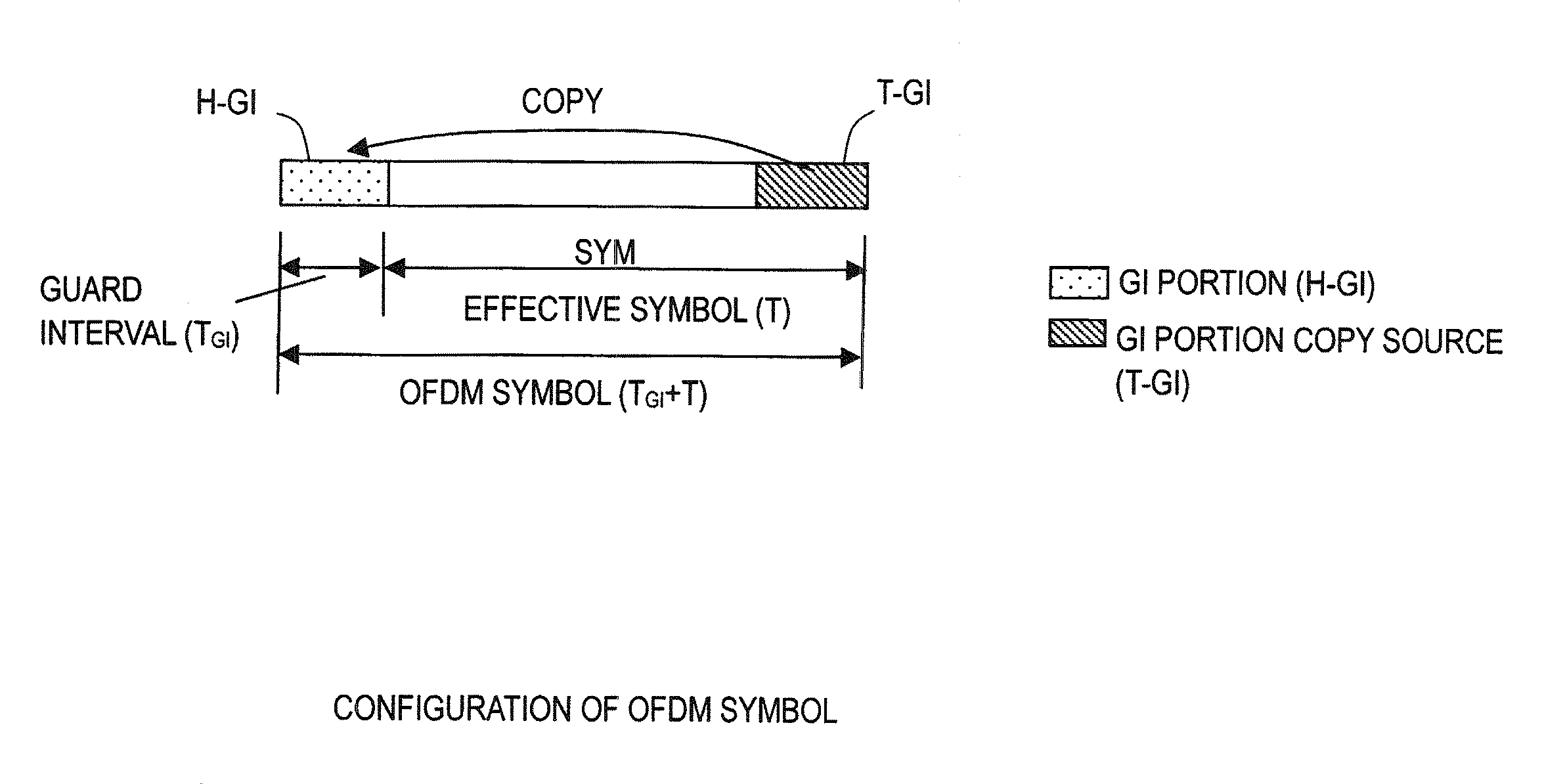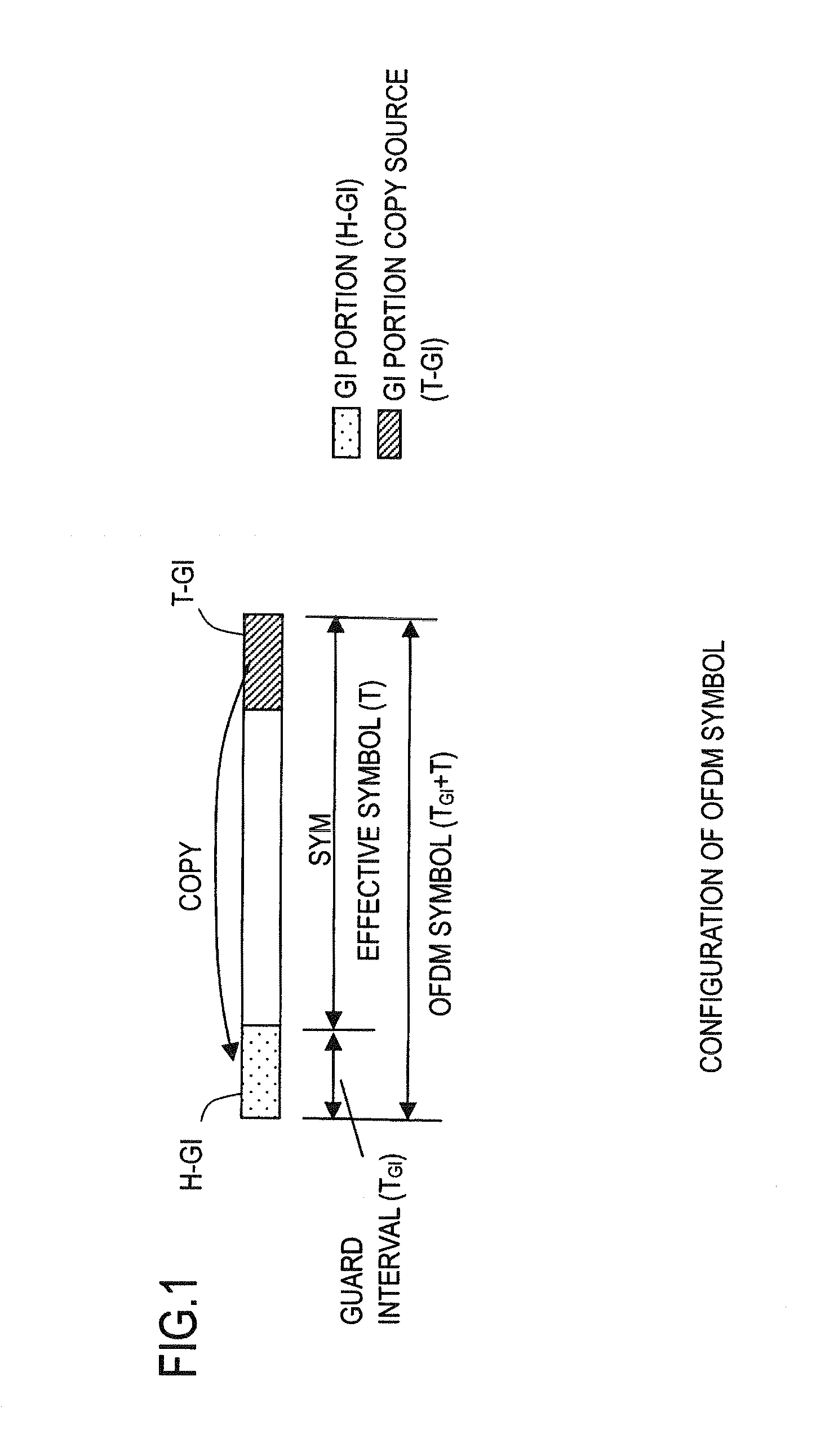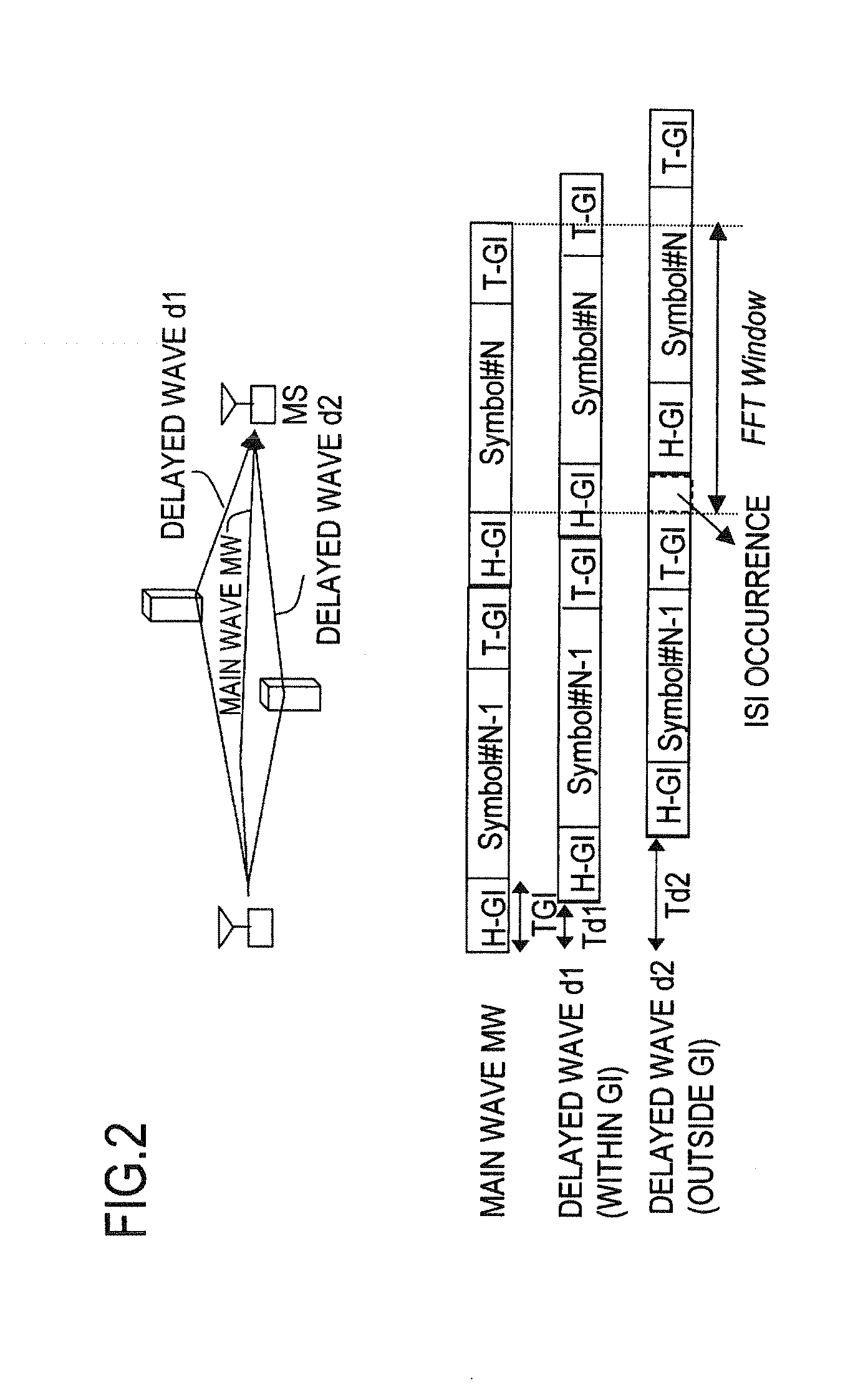receiver
a receiver and receiver technology, applied in the field of receivers, can solve the problems of inability difficult to eliminate interference waves, and possible degradation of reception signals
- Summary
- Abstract
- Description
- Claims
- Application Information
AI Technical Summary
Benefits of technology
Problems solved by technology
Method used
Image
Examples
embodiments
[0053]FIG. 4 depicts in summary the configuration of the receiver of this embodiment. This receiver has four antennas AT1 to AT4, and, for each antenna, a high-frequency circuit RF which down-converts the frequency of the received wave, and an adaptive equalizer 10-1 to 10-4 which attenuates those interference waves, among advanced waves and delayed waves with respect to the main wave due to multipath propagation, for which the delay time exceeds the guard interval time. Also, the receiver has a spatial diversity combining portion 16 which multiplies the output signals of the adaptive equalizers 10-1 to 10-4 by weighting coefficients w1 to w4 and adds the results, and a weight control portion 14 which generates the weighting coefficients w1 to w4 based on the output signals of the adaptive equalizing means. The output of the spatial diversity combining portion 16 is subjected to FFT processing to convert from time-domain signals y(t) to frequency-domain signals Y(f). FFT may also be...
first embodiment
[0076]FIG. 7 depicts a configuration of the receiver of a first embodiment, which is a more specific configuration of the device of FIG. 4. In FIG. 7, due to space constraints, only two antennas AT1 and AT2 are depicted, but the antenna may be an adaptive array antenna having four antennas, as in FIG. 4, or a plurality of antennas equal to or greater than four. In each of the antennas AT1, AT2 are provided high-frequency reception circuits RF, analog / digital conversion circuits ADC, and adaptive equalizers 10-1, 10-2. And, delay amounts τpre and τpost are set as TAP delay position information in the adaptive equalizers 10-1, 10-2 by the TAP delay amount setting portion 12A. This TAP delay amount setting portion 12A is provided with delay information for interference waves to be equalized, decided in advance by the equalizer setting unit 12 using the above-described algorithm. By this means, interference waves are equalized and attenuated from the output signals x1′ (t), x2′(t) of th...
second embodiment
[0105]FIG. 15 depicts the configuration of the receiver of a second embodiment. This receiver is provided with a high-frequency circuit RF and an analog / digital converter ADC for each of two antennas AT1, AT2. And, the adaptive equalizer 10-2 of FIG. 8 is provided on the side of the antenna AT2. On the other hand, a fixed delay circuit 40 and a subtractor 43 are provided on the side of the antenna AT1. And, a replica generation portion 41 which generates a replica signal x1″(t) from the output signal x2′(t) of the adaptive equalizer 10-2 on the side of the antenna AT2 is provided; the replica signal x1″(t) generated thereby is subtracted from the reception signal x1(t) on the side of the antenna AT1 by the subtractor 43, to equalize the interference wave. To this end, a coefficient computation portion 42 is provided which computes coefficient values from the output signal x2′(t) of the adaptive equalizer 10-2 and the output signal x1′(t) of the subtractor 43 and provides it to the r...
PUM
 Login to View More
Login to View More Abstract
Description
Claims
Application Information
 Login to View More
Login to View More - R&D
- Intellectual Property
- Life Sciences
- Materials
- Tech Scout
- Unparalleled Data Quality
- Higher Quality Content
- 60% Fewer Hallucinations
Browse by: Latest US Patents, China's latest patents, Technical Efficacy Thesaurus, Application Domain, Technology Topic, Popular Technical Reports.
© 2025 PatSnap. All rights reserved.Legal|Privacy policy|Modern Slavery Act Transparency Statement|Sitemap|About US| Contact US: help@patsnap.com



